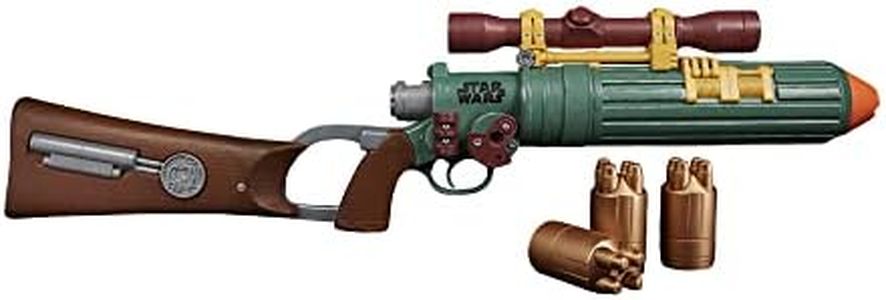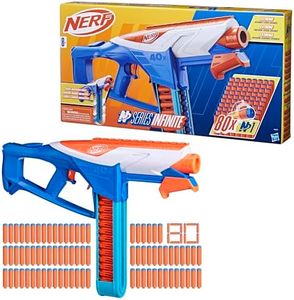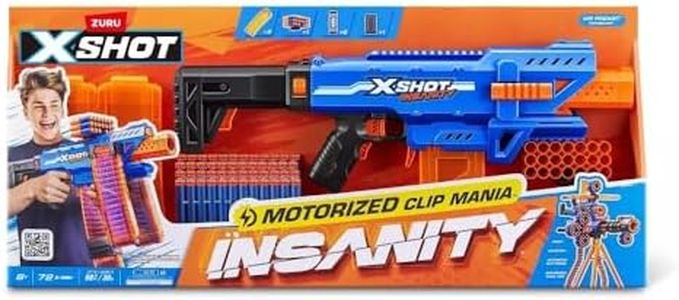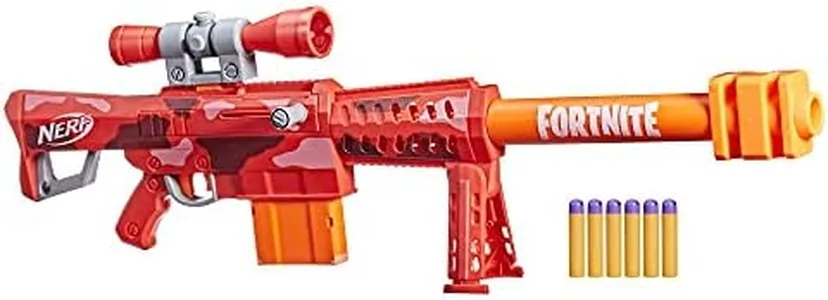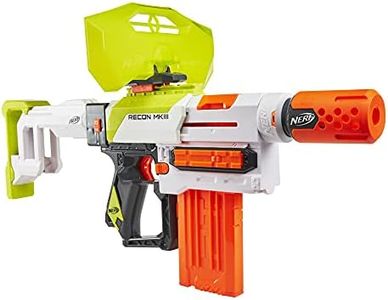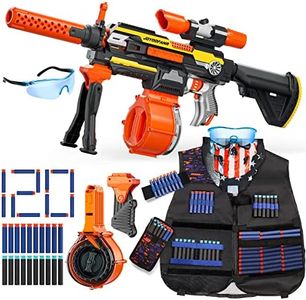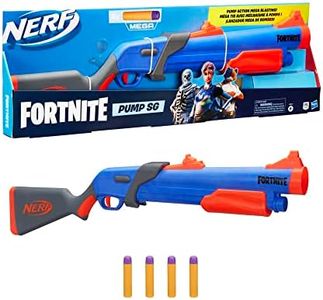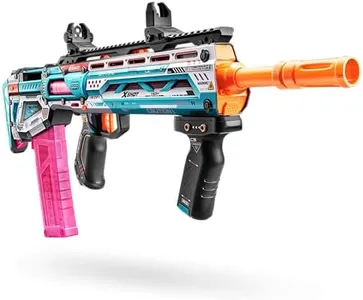We Use CookiesWe use cookies to enhance the security, performance,
functionality and for analytical and promotional activities. By continuing to browse this site you
are agreeing to our privacy policy
10 Best Nerf Guns
From leading brands and best sellers available on the web.By clicking on a link to a third party's website, log data is shared with that third party.
Buying Guide for the Best Nerf Guns
Choosing the right Nerf gun can make a big difference in how much fun you have, whether you’re looking for friendly games at home, competitive battles with friends, or just a cool item to collect. There are many different types and features in Nerf guns, so it helps to know what exactly you want to use yours for. Some people want fast-firing blasters for intense battles, while others prefer accurate, single-shot options for target practice. By understanding the key specs, you can find a Nerf gun that fits your style and needs.Firing MechanismThe firing mechanism describes how the Nerf gun launches its darts. The most common types are manual (spring-powered), semi-automatic (requires trigger pull for each shot), and fully automatic (holds the trigger for rapid fire). Manual options are simple and reliable, great for younger users or those who value easy use. Semi-automatics balance speed and control, making them popular for all ages. Fully automatics are best if you want rapid-fire and don’t mind frequent reloading or battery use. Your choice should match how fast and intensely you want to play.
Reload CapacityReload capacity refers to how many darts the Nerf gun can hold at once, usually in a clip, drum, or rotating barrel. Small capacities (3-6 darts) mean more frequent reloading but may be lighter and easier to handle. Medium (6-12 darts) offers a balance of continuous firing and easy handling. Large capacities (12+ darts) allow for longer play without stopping but make the Nerf gun heavier and sometimes more awkward to use. If you like fast-paced games or don’t want to reload often, a higher capacity is useful. For casual play, a smaller one might be fine.
RangeRange indicates how far the Nerf gun can shoot its darts. Short ranges (up to 40 feet) are suitable for smaller spaces or indoor play. Medium (40-70 feet) works well for backyards or moderate spaces. Long ranges (70+ feet) are best for outdoor or competitive settings where reaching opponents from a distance is important. Think about where you’ll use your Nerf gun most—is it a big outdoor battle, or quick games inside your living room? Pick a range that fits your main play area.
Dart Type CompatibilityDart type compatibility tells you what shape or size of Nerf dart the blaster uses. Standard darts (like Elite) are common and easy to find, while some Nerf guns use unique types (such as Mega or Ultra darts). If you already have a collection of darts or want to easily buy replacements, stick to common types. Special dart types can offer different performance or looks, but may be harder to replace. Consider what’s easy for you to find and if you want to mix and match between other Nerf guns.
Size and WeightSize and weight affect how comfortable and practical the Nerf gun is to hold and carry. Compact and lightweight blasters are easy for kids to use and good for running around quickly. Larger or heavier blasters may offer more features or capacity but could be tiring or cumbersome for some users. If you have younger players or want quick movement, choose something small and light. For bigger, showier battles or collectors, larger models might be appealing.
Ease of Reloading and UseSome Nerf guns are very straightforward to use—load the darts, pull the trigger, and go. Others may require extra steps like priming, cocking, or reloading clips. Simple options are best if you want stress-free play or are buying for younger children. More complex systems might suit older players who enjoy tinkering or don’t mind extra steps. Think about who will use it, and how much time you want to spend on the mechanics versus actually playing.
